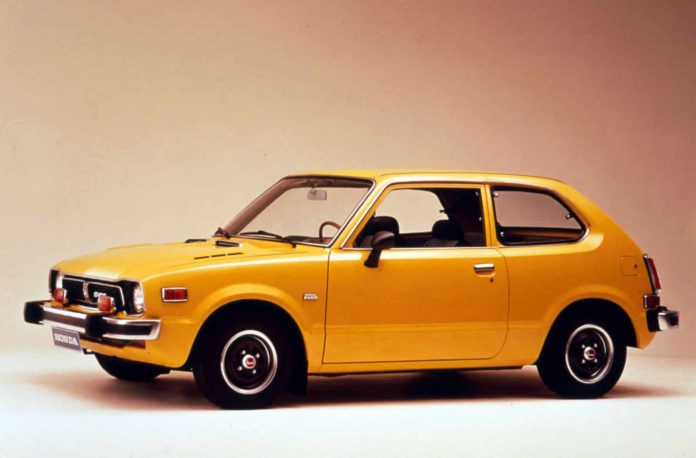Soichiro Honda had long aspired to become one of the world’s top automakers. Along with his partner, Takeo Fujisawa, he had founded the Honda Motor Co. in 1948, becoming Japan’s top motorbike manufacturer within a decade.
He successfully branched out to the United States, established American Honda Motor Co. in 1959. By 1965, Honda was the world’s largest motorcycle manufacturer, with sales of $77 million.
Now, he was about to launch the N360, a four-passenger mini car.
Standing in the Sayama Factory, he looks at the completed clay model prototype. Not happy with the car’s rear pillar shape, he takes a plane and corrects the design flaw. In the morning, the head of production is not thrilled with the design change; the dies were already been completed. But Soichiro wanted the change, and so ¥8 million were spent making new dies.
In the end, the production version of the “kei-class” N360, its size and power dictated Japanese law to skirt the country’s tax laws. It went on sale in October 1966, boasting a 354-cc, air-cooled 2-cylinder engine with 31 horsepower, a top speed of 71 mph, and a price of ¥313,000. A sales success, it earned the nickname “Enu’koro” or “Little Puppy N.” It would lead to the car that would achieve Soichiro’s wildest dreams: the Honda Civic, but not before his dream of car production nearly crashes.
The path to car production
Soichiro started experimenting with four-wheel transport in 1955 with the XA710, a mini “people’s car,” and followed by the XA190, a two-seater sportscar, the XA120, a mini truck, and eventually, the S360, which he drove around the Suzuka Circuit during a Honda dealers meeting in 1962.
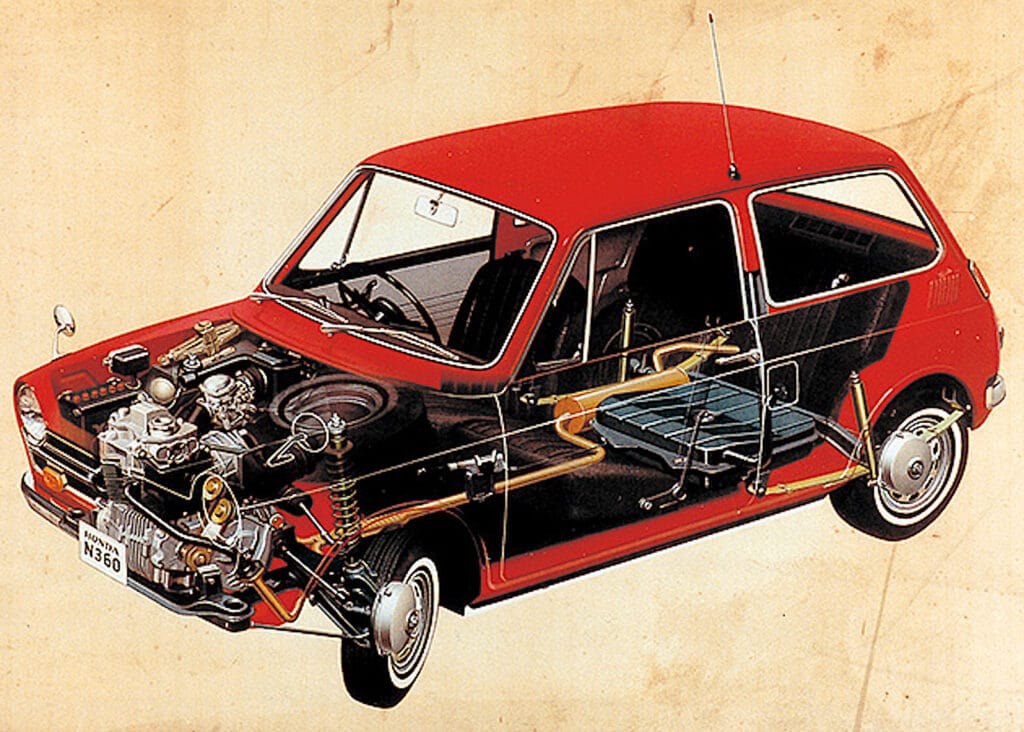
It would lead to the chain-drive S500, a two-seat roadster, in 1963, followed by the S600 and S800, roadsters with ever increasing performance and interior amenities.
But the N360, the company’s first four-seater, was joined by essentially the same car with a larger, 45-horsepower air-cooled two-cylinder engine, the N600, in 1967. This was meant for export to Europe, at least initially, as a competitor to British Motor Corporation’s Mini.
In the meantime, Honda was also developing what it considered its first international car, the Honda H1300, powered by a 100-horsepower, 1.3-liter air-cooled engine that would be released in 1969. Soichiro was a big fan of air-cooled engines. “Since water-cooled engines eventually use air to cool the water, we can implement air cooling from the very beginning,” Soichiro said. “That will eliminate the problem of water leaks, and it will facilitate maintenance.”
Upon its release, the future seemed bright. Japan had grown to become the world’s second-largest auto producer behind the United States. The country’s annual fiscal growth is more than 10%. The country is expanding exponentially, and is to host the Olympic Games in 1972. All seems rosy as the company begins exporting the N600 to the United States, the first car it had ever sold there.
But little did Soichiro know that his company’s growth is about to stall.
A bumpy road
As it turns out, the H1300 is a flop. Honda had focused too much attention on the car’s engine, and not enough time on the rest of the car. The mill was too heavy, which added weight to the car, leading to poor tire wear. Pollution controls wreaked havoc on its behavior. And consumers thought the car too expensive.
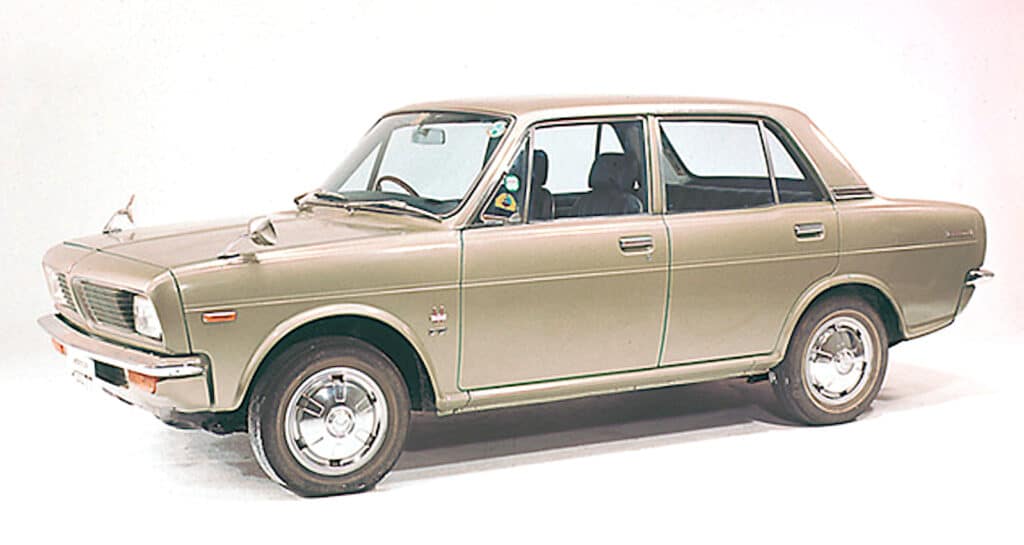
This led to poor sales coming on the heels of allegations of defects in its most popular car, the N360. As a result, Honda is struggling, and a meeting is called on what to do.
It’s now 1970, and Masami Suzuki, general manager of Honda’s Wako R&D Center, tells member to go to the company’s Suzuka factory where the 1300 is being built. Honda designer Shinya Iwakura is among those who arrive. “There were only a few H1300s scattered along the line,” he recalled. “We were stunned by such a harsh reality.”
Upon their return, the R&D team members know what they’re in for. The pressure is on. If the next car fails, Honda will have to end any thoughts of becoming a full-fledged automaker. Suzuki instructed his team on the next course of action.
“Give me a report,” he ordered, “detailing the kind of car we should develop for the Japanese market and other markets around the world.”
A humbling time for Honda
R&D chief Hiroshi Kizawa, who was to guide the new car’s development, knew where their problem lay.
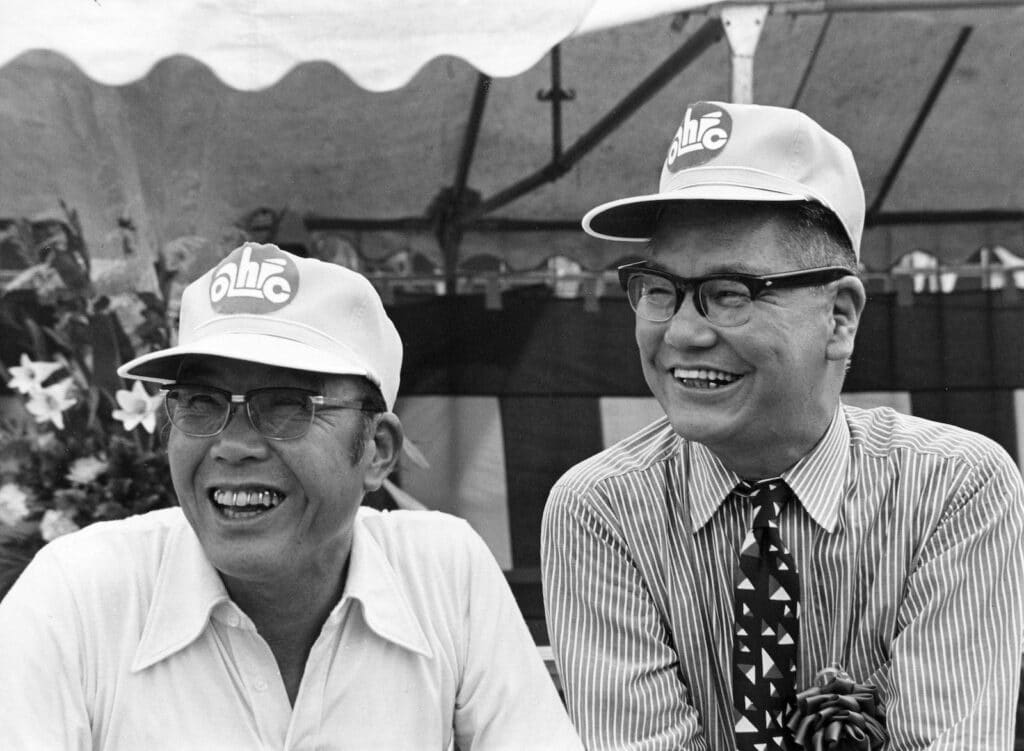
“We’d been making a car that the Old Man wanted to build,” he said, referring to Soichiro. “We were all weary of the fact that we had made a car that was very good in certain areas but poor in others. We wanted to create a more ordinary car that could provide good quality in all aspects.”
Kizawa expected Sichiro to interfere with the car’s development. And so he decided to split research from development, forming two teams to build the next car. He would lead the first team, consisting of veteran engineers in their late 30s, the other is comprised of young engineers in their late 20s and early 30s in an effort to stoke competition.
But unbeknownst to Kizawa, Soichiro had met with Fujisawa to talk about the direction of Honda’s next car. Soichiro wanted to continue developing air-cooled engines, Fujisawa didn’t. And so he asks Soichiro a simple question.
“Mr. Honda,” he asked, “do you want to stay with Honda as president of the company, or do you want to stay as an engineer?”
After a period of silence, Mr. Honda replied, “I will stay as president.”
The next car was water-cooled.
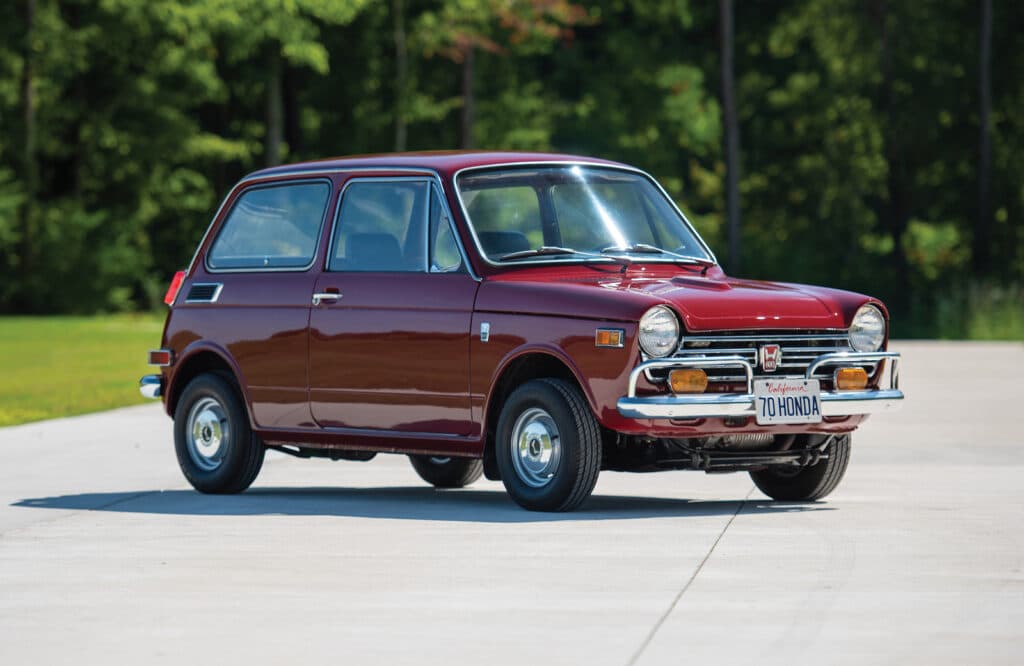
Which way to go
When Kizawa’s teams meet to present their ideas, they find they are nearly identical.
The new car was to be “utilitarian and minimalistic, providing an optimal blend of size, performance and economy.” It would be designed using the concept of “man maximum with ample interior space” that would boast enough features that wouldn’t sacrifice creature comfort in the name of efficiency.
It would employ a two-box design using a water-cooled 1200-cc front engine and front-wheel drive. The car’s target weight was to be 600 kilograms, or 1,323 pounds. Ultimately, the car weighed in at 680 kilograms, or 1,499 pounds.
The team also planned to use a four-wheel independent strut suspension, which would not only help maneuverability, stability, front/rear balance and weight reduction, it would also increase interior space. But Soichiro favored solid beam rear axles, due to its simple structure that allowed for productivity.
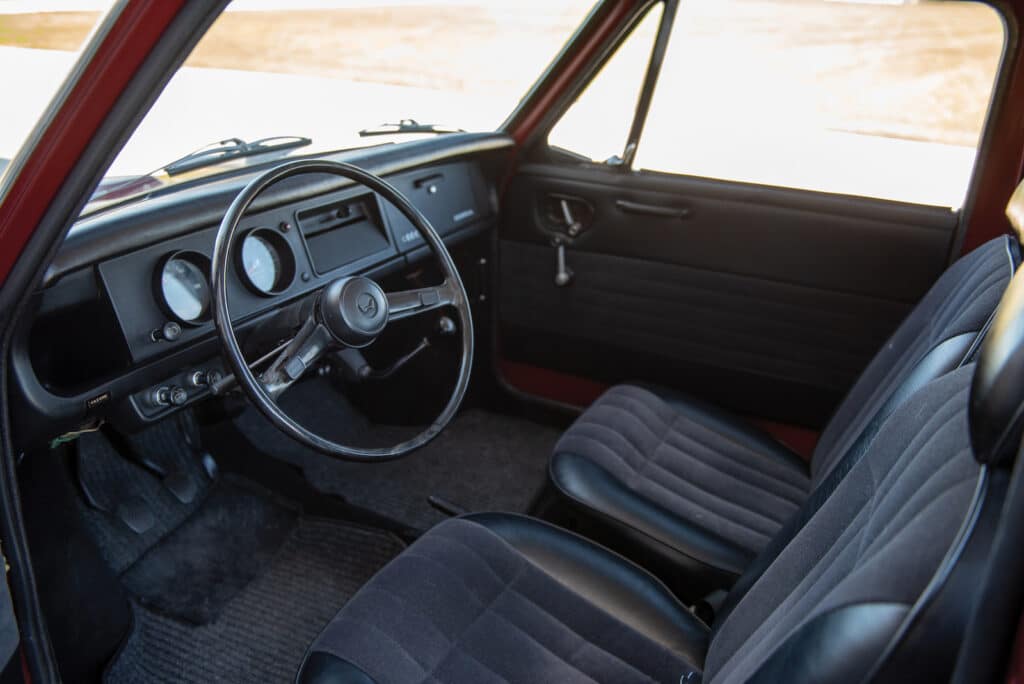
Ultimately, Mamoru Sakata, who was in charge of suspension design, was asked to the boardroom to defend his design to an unhappy company founder and Kiyoshi Kawashima, the senior managing director of Honda Motor Co. and the former head of American Honda.
“I don’t see any merit in the independent suspension,” Soichiro said pointblank.
Sakata asked Kawashima for his thoughts.
“At least Mr. Sakata is passionate about this idea,” he said. “Maybe we should let him pursue it.”
Kawashima’s support must have taken Soichiro by surprise. He concedes.
“Okay, then do it,” he said.
A new wrinkle
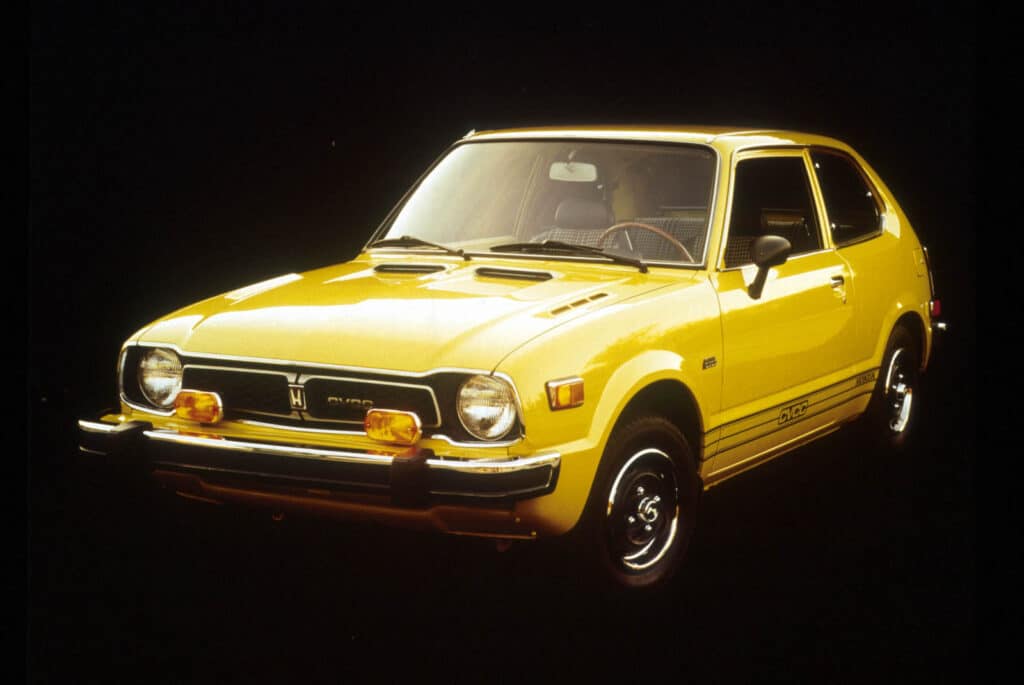
As the new car develops, plans call for an overall length of 134 inches and a width of 57 inches. But in the meantime, the Japanese government had initiated its People’s Car Program which dictated that passenger space be limited to 5 square meters, or 54 square feet.
And given that Honda’s dealers sold motorcycles, showroom space was constrained. Designers also had to widen the car to 59.3 inches to accommodate the transversely-mounted engine. As a result, length was cut by 3.9 inches, giving the new car a stubbier look.
As it nears production, the car is named the Civic, meaning “a car created for citizens and cities.”
And this week in 1972, after two years of development, Honda introduces the first Honda Civic in an elaborate ceremony in Japan. Within a month, the company produces 12,000 units, and it would go on to win the Japan Car of the Year Award in 1972, 1973, and 1974. It hasn’t stopped winning accolades since, or customers, selling more than 12.3 million units since its U.S. introduction in March 1973.
It’s a success Soichiro would never forget.
“When I was a kid, I run after a Ford Model T and held my nose up to the oil that sputtered out onto the ground,” said Soichiro Honda upon being named to America’s Automobile Hall of Fame in October 1989. “I took a whiff and was thrilled by the smell. That experience led to my making automobiles today.”

